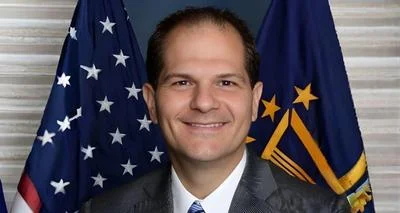According to data from the U.S. Census Bureau, the median salary for a teacher in Chicago Public Schools is $78,910. | Shutterstock
According to data from the U.S. Census Bureau, the median salary for a teacher in Chicago Public Schools is $78,910. | Shutterstock
The practice of the "pickup" -- where school districts pay some, if not all, of teachers' contributions into their own retirement pensions -- could leave Illinois' educators, students and taxpayers high and dry.
Pension pickups have "destroyed spending accountability in Illinois, put teacher retirements at serious risk and left Illinoisans with a massive tax increase," the Illinois Policy Institute said in a report titled "Playing Favorites."
Currently, public school teachers in Illinois must pay 9.4 percent of their salary into the retirement system; however, the Illinois School Board of Education says that nearly two-thirds of school districts statewide pay some or all of each teacher’s required contribution.
The Chicago Teachers Union recently threatened to strike after the Chicago Public Schools (CPS) proposed a balanced budget of $5.4 billion that included eliminating the district's 7 percent teacher contribution into the union retirement system.
According to data from the U.S. Census Bureau, the median salary for a teacher in Chicago Public Schools is $78,910, as opposed to the median earnings of an average Chicago taxpayer, which is approximately $31,096.
"The state stepped up, our local taxpayers stepped up, CPS has stepped up," Chicago Public Schools CEO Forrest Claypool said. "We need the teachers to be part of the solution to protect their own jobs and pensions, but also to protect our kids and to show good faith to those hard-working taxpayers who are sacrificing for them and our schools."
According to the Illinois Policy Institute, many school districts are using a portion of state-issued funding to pay for pension pickups instead of using it for students.
"State education funding is designed to ensure a base amount of money is available to every student in Illinois," the Illinois Policy Institute said. "To that end, the state strives to send more money to poor districts and less money to districts with a healthy property tax base. But a bird’s-eye view of Illinois education spending reveals that the state’s intention of sending dollars to poor districts is blunted by the state’s obligation to pay local teachers’ pensions."
Schools that receive the most state funds for education are in the lowest income areas, where teachers' salaries are also the lowest. The school districts in those areas then turn around and send much of the state money to the TRS, which distributes the funds based on how much a teacher earned while in the classroom, with the highest earning teachers receiving the greatest pension payout.
"How much the state spends on TRS contributions is based on how much local school districts pay their teachers," the Illinois Policy Institute report said. "Since wealthier school districts tend to pay their teachers higher salaries, the state ends up paying higher TRS contributions for teachers from these districts."
With the state embroiled in a pension crisis that is now up to $111 billion in the red (including a deficit of $62 billion in the Teachers' Retirement System alone), the head of the TRS has said that the system won't be able to meet its financial obligations by 2029 if the practice of pickups continues.
Placing the blame for the proliferation of pension pickups on the collective bargaining process, the institute pointed out that school districts are starting to rebel against practice. Cary School District 26, for example, was embroiled in a battle last year over continuing to pay the teachers' pension costs. The teachers stood their ground and the pickups remained, although they did agree to cuts to other benefits.






 Alerts Sign-up
Alerts Sign-up